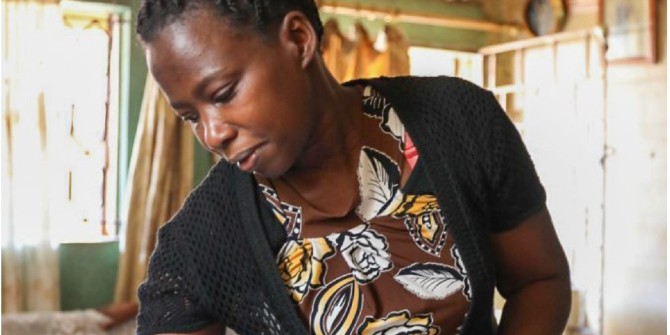What do we want education to achieve? Amelia Peterson (LSE) and Vikram Ghandeeswaran Narayanan (Dream a Dream) explore what it would mean if education’s purpose were to enable children to thrive.
Even before the pandemic, 53% of children in low and middle-income countries were unable to read or understand a simple story by the age of 10. The World Bank predicts the pandemic will increase this figure to 63%. The learning crisis has been accompanied by a global mental health crisis: even before COVID, the cost of mental health conditions and their consequences was projected to rise to $6 trillion globally by 2030, from $2.5 trillion in 2010. In the UK alone, 7% of children in the Millennium cohort study reported having attempted suicide by the age of 17. School closures, falling incomes among the poorest and enforced periods of self-isolation are bound to exacerbate this crisis.
Given these challenges, do we need a new global purpose for education? At the launch event of our book, Thrive: the Purpose of Schools in a Changing World, Valerie Hannon and I joined Suchetha Bhat and Vishal Talreja of Dream a Dream, Tom Fletcher, the principal of Hertford College at the University of Oxford and a former UK ambassador, and Andreas Schleicher, the Director of Education and Skills at the OECD.
We spend a great deal of time addressing the how of education, but not much on the why. What job are we asking education systems to do for us? Without revisiting this purpose of education, the dysfunctional education paradigm can only continue. Thrive proposes that education must address what it takes to thrive at four different and profoundly connected levels.
Planetary and global: How do we create a liveable planet from which we can continue human life and the life of other species?
Societal: How do we create equitable and prosperous societies and communities that live together in a way which is satisfying and purposeful?
Interpersonal: How can we learn to make and sustain loving and respectful relationships?
Intrapersonal: How can we enable young people to learn about their own bodies, their own minds, and their own emotions?
Building on this argument, Vishal Talreja set out three ways in which we have to think beyond our assumptions about what education is for.
- Equity: Traditionally, education has worked only for the top 10-15% of the population, and these pupils have gone on to do well in careers and life. They have become decision-makers and influencers and people of privilege in society. But in this process, we have left out a huge chunk of the population for whom education has not served a purpose.
- Children missing developmental milestones: The majority of children going to school from low- and middle income countries are first-generation school goers. In their early childhood, they may have experienced poverty, neglect, and in some extreme cases even abuse and violence. When they enter an education system, they are not fully developed (be it emotionally or physically), yet are expected to engage and be successful in a one-size-fits-all designed education system.
- Facing uncertainty: Our world is an increasingly complex space with high levels of uncertainty and change. Our education systems are not building the life skills and social-emotional competencies that children need to be resilient, adaptive, and have the agency to flourish in a complex environment.
Andreas Schleicher agreed that young people need future-ready and crisis-proof education systems. But right now we often only have an instrumentalist view of education. Even universities are merely places we attend for three years before going out into the world for jobs. We need to imagine different kinds of futures for education so as to be better prepared to build forward differently from the current crisis.
Suchetha Bhat agreed that we must build forward differently, but added that we also have to take account of how we have let children down. The pandemic has had a terrible impact on children. They are being forced to become adults, as their families have suffered loss of life and loss of livelihoods. Yet In India, for example, the education systems are preoccupied with board exams going ahead.

Tom Fletcher spoke to the need for change from the perspective of a ‘recovering diplomat’. For 25 years he has dealt with the consequences of education ignoring purpose, and the resulting conflict and inequality. Diplomacy needs education, but perhaps education also needs diplomacy. The educational community should be more supportive of long term changes and make it easier for policymakers to innovate, take risks and also afford to make mistakes. The demand for change needs to come from young people themselves, parents, and educators to build fresh narratives around education.
Bhat went on to reflect that contextualising the purpose of education can be helpful. Since the four levels of thriving can apply in any setting, it could become an extremely powerful idea to ground our thinking. With average unemployment rates at 5.7% globally, approximately half the human race still lives on the equivalent of around US$2 a day. Even having a job does not guarantee freedom from poverty. If we redefine and repurpose education towards the idea of thriving, then young people from poor backgrounds will have something to learn for. They will not just be motivated by the need to get a job, and their families will not be trapped in the narrative that if their child gets a job they will escape from poverty. A young person who believes in the idea of thriving would be able to say: “I’m an active citizen and I’m able to give back to my community. I’m happy to be able to show up every day for my family and community in these testing times.”
Thriving must be a two-way street. Young people must be able to find the agency to respond to change and challenges. Meanwhile, society as a whole should work on breaking down the systemic barriers that obstruct young people’s ability to thrive.
Read an edited extract from Amelia Peterson and Valerie Hannon’s book, Thrive: The Purpose of Schools in a Changing World, and listen to a podcast of the event. If you have ideas about the purpose of education in England, join the Big Education Conversation.
This post represents the views of the authors and not those of the COVID-19 blog, nor LSE.






An article that looks at the hearts of the students and the suffering therein.
This is a very interesting article – I really like the clarity and power of the thrive paradigm. Good luck with the book!
How can we make education work for all children, not just the lucky few?
The solution is simply the simplest: make elememtary and secondary education free for all children.